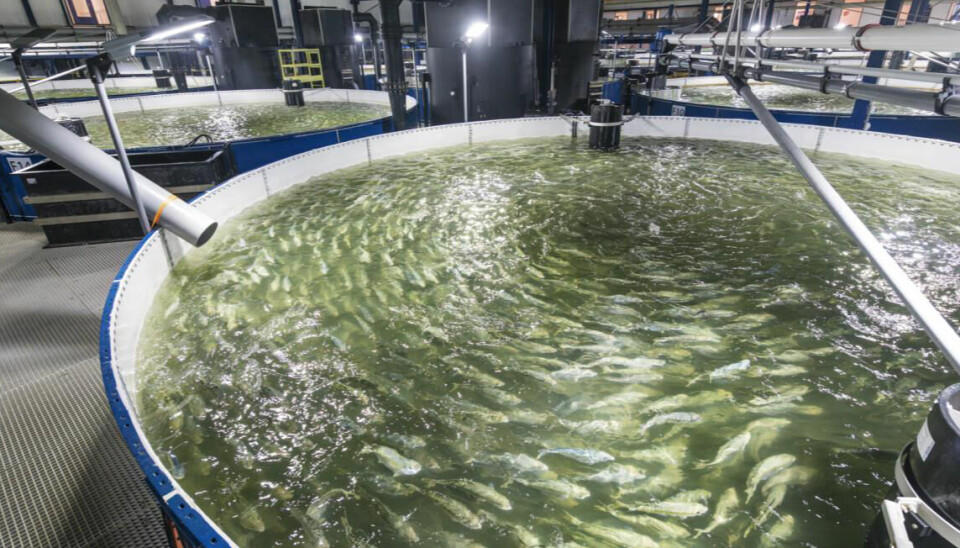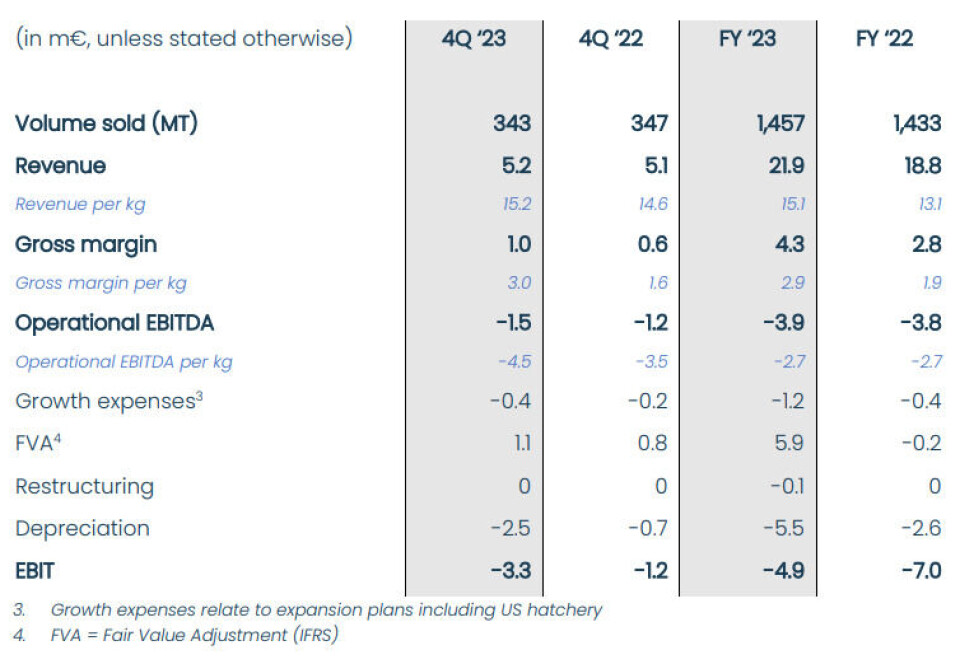
Kingfish Company chief predicts ‘prosperous future’
Erenst lists price and harvest volume improvements for land-based fish farmer
Netherlands land-based fish farmer The Kingfish Company has highlighted its record biomass growth and “outstanding biological performance” in 2023, despite continuing to lose money.
The seriola producer recorded biomass growth of 2,195 tonnes last year, up from 1,511 tonnes in 2022, and finished the year with standing biomass of 967 tonnes (2022: 408 tonnes).
Revenue per kilo was up by 15% to €15.1, although selling, general, and administrative expenses (SG&A) costs rose by 25%. The company made an operating loss of €3.9 million (£3.34m) in 2023, compared to €3.8m in 2022 but is confident of achieving profitability after reaching several milestones last year including the completion of an expansion that more than doubles production capacity from 1,500 to 3,500 tonnes per year. Steady state production is expected to be reached next year.
Continued growth
“Our Phase 2 expansion has been successfully completed, setting the stage for continued growth,” said chief executive Vincent Erenst in a report on The Kingfish Company’s full year and Q4 2023 financial results.
“The record biomass growth and outstanding biological performance of our fish have exceeded expectations. Looking ahead, we see potential to further enhance our operations through efficiencies and economies of scale. Our primary focus remains on accelerating sales growth while simultaneously improving operational efficiency. We are looking forward to an exciting and prosperous future.”

The company achieved a 54% increase in gross margin per kg to €2.9 (2022: €1.9 per kg) despite rising input costs. This was attributed to increased harvest volume as well as enhanced operational efficiency, driven by lower feed conversion ratio and new feed formulations.
Higher average sales prices and a more favourable sales mix also contributed to the improved gross margin.
The company also achieved a 33% reduction in its Forage Fish Dependency Ratio (FFDR) last year, to 1.71.
Kingfish Maine
The company’s US subsidiary, Kingfish Maine, has permission to build an 8,500-tonnes-per-year recirculating aquaculture system (RAS) facility in Jonesport, Maine, but there was no indication in the report about when construction might start.
“Whereas the current main priority is on optimising the operations in the Netherlands, the Company also continues to investigate expansion plans in the US, Europe, and other regions,” stated The Kingfish Company.
“The Company expects to benefit from the scaling effect and further improvement in operations and productivity to become profitable and cash positive.”























































